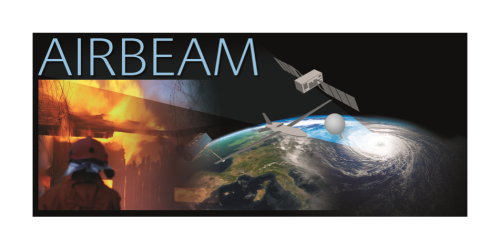Airbeam
Natural or man-made disasters have caused severe damage and many casualties in all European countries over the past ten years. Due to high population densities, the risks and effects of future disasters are expected to be even more dramatic. A key capability to leverage unpredictable large-scale incidents is access to associated information and situation-awareness. Within the FP7 Project AIRBEAM (AIRBorne information for Emergency situation Awareness and Monitoring), a multi-platform approach is investigated to provide fast, large-scale and enriched data to rescue forces.
Project duration: 01.01.2012 - 31.12.2015

Airborne platforms from satellites to micro-UAVs and sensors such as electro-optical, multi-/hyper-spectral and acoustic are combined to demonstrate new technologies and standards during crisis management.
With an approach based on a multiplatform system for situation awareness and through an effective collaboration between industrial partners, research organizations, stakeholders and end users, AIRBEAM intends to:
- Provide and demonstrate value to crisis management
- Provide an integration framework serving security applications to the multiple related initiatives
- Develop the technological bricks and standards
- Assist the civilian RPAS market
- Deliver a regulatory framework for RPAS insertion into civil airspace
AIRBEAM defines system requirements as well as designs and optimizes dedicated architectures aiming at presenting the relevant information to users, based on various available assets (sensors, platforms and communication systems). The benefits of the AIRBEAM system for end users have been demonstrated in two live demonstrations in Antwerp Belgium and Beja, Portugal. The Communication Networks Institute designed and implemented the overall system architecture and developed a UAV swarm. With the help of innovative communication-aware mobility strategies and role-based behaviors, the swarm was able to operate much longer than the individual resource constrained UAVs and provide important information to the rescue forces. Results, impressions and end user feedback is presented in the video below.
Further information:





